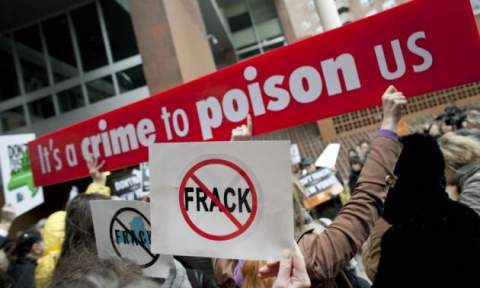Sunday Times review of DEP drilling records reveals water damage, murky testing methods
First of two parts
State environmental regulators determined that oil and gas development damaged the water supplies for at least 161 Pennsylvania homes, farms, churches and businesses between 2008 and the fall of 2012, according to a cache of nearly 1,000 letters and enforcement orders written by Department of Environmental Protection officials and obtained by The Sunday Times.
The determination letters are sent to water supply owners who ask state inspectors to investigate whether oil and gas drilling activities have polluted or diminished the flow of water to their wells.
View interactive map:
Inspectors declared the vast majority of complaints - 77 percent of 969 records - unfounded, lacking enough evidence to tie them definitively to drilling or caused by a different source than oil and gas exploration, like legacy pollution, natural conditions or mining.
One in six investigations across the roughly five-year period - 17 percent of the records - found that oil and gas activity disrupted water supplies either temporarily or seriously enough to require companies to replace the spoiled source.
The letters confirming contamination or water loss from drilling and the orders that require companies to fix the damage provide what is likely the best official count of the industry's impact on individual water supplies in Pennsylvania because the state does not track the disruptions.
The Sunday Times requested the records in late 2011, and received access to them late last year after a state appeals court ruled that the DEP had to release the documents regardless of whether it was hard for the agency to find them in its files.
While the records compiled by the newspaper offer a more complete tally of the number of affected properties than was previously available, the count is not exhaustive:
- DEP tracks oil and gas-related disruptions to water supplies based on broad incidents, each of which might affect one or many water supplies, making comparisons between the totals difficult. A case of gas migrating into Dimock Twp. drinking water, for example, is considered one incident by DEP even though the state determined it affected 18 water wells used by 19 families. DEP spokesman Kevin Sunday said the agency compiles "some information" on the number of affected water wells and springs, but DEP's statistics on impacted water supplies differ from the numbers documented in the letters and orders released to The Sunday Times. Between 2010 and 2012, DEP counted 103 impacted water supplies - six more than were documented for those years in the records released to the newspaper.
- DEP repeatedly argued in court filings during the open records case that it does not count how many determination letters it issues, track where they are kept in its files or maintain its records in a way that would allow a comprehensive search for the letters, so there is no way to assess the completeness of the released documents.
- Before a 2011 regulatory update, solutions worked out privately between homeowners and drillers were not required to be reported to the department. The Sunday Times requested the notices of potential water contamination that now have to be passed on to DEP by drilling companies that receive them from residents, but the request was denied by DEP and the state's Office of Open Records because the documents are considered part of protected investigations.
- The conclusions described in the determination letters are seldom absolute because substances read as signals of drilling-related contamination are also routine signs of other man-made or natural influences.
The article goes on to say:Transparency questioned
The department's water testing and reporting protocols have come under scrutiny in recent months as environmental activists and homeowners whose drilling-related complaints were dismissed have come to doubt the determinations' accuracy and value.
DEP recently changed its policy for issuing water contamination notices to require administrators in Harrisburg to approve them before they are sent out from the regional field offices that conduct the investigations. The state's laboratory technical director, deposed when a resident appealed the DEP's conclusion that drilling activities had not polluted his water supply, acknowledged that DEP reviews and reports back to homeowners only those contaminants it considers indicative of drilling-related contamination, not all of the contaminants that might surface in its water tests - a common practice for tailoring laboratory analysis but one that spurred critics to question the thoroughness and transparency of DEP's investigations.
In January, state Auditor General Eugene A. DePasquale announced his office is conducting a performance audit of the DEP's water testing program to "determine the adequacy and effectiveness of DEP's monitoring of water quality as potentially impacted by shale gas development activities" between 2009 and 2012.
Debate over the safety of oil and gas extraction - especially the combined tools of horizontal drilling and hydraulic fracturing used in pursuit of fuel from unconventional sources like the Marcellus Shale - is often characterized as an argument between activists who exaggerate claims of damage and industry public relations teams who minimize them.
But the determination letters released by the state reveal a widespread suspicion among water supply owners - farmers and summer residents, school board members and mini-mart operators, churches and a Wyoming County municipal water authority - that when their water seems soured, gas drilling operations might be to blame.



